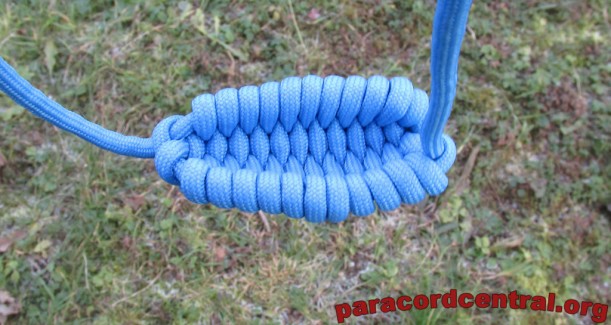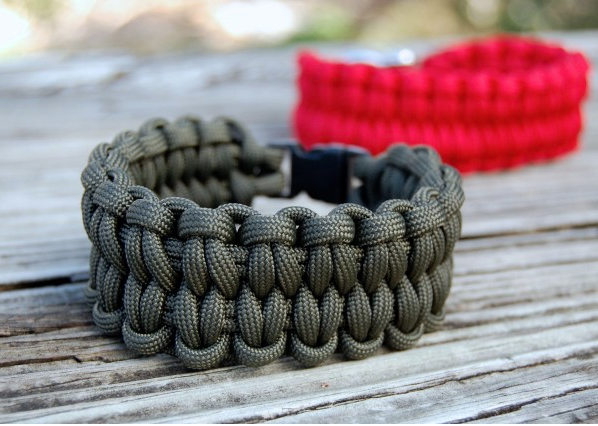Don’t make the same mistakes than many preppers and stockpile these vital items before a disaster occurs!
Tag Archives: survival
How to Make Soap in a Survival Situation
Most of the people who are in a survival situation, do not think about hygiene at all. But the main point is that it is really important because if you keep your body clean, you can avoid all the diseases and infections. These ailments can kill you or make your life tough in that situation. Another thing to note here is that making through the survival situation is not that tough as you might think. Importantly, you would be requiring your material used in usual survival activities like grease, ash or animal fat.
Making soap in survival situation
One of the most common way to make a cleaner is to mix wooden ash into grease. This method is really quick and easy to make. The only problem here is that the cleaner which will be formed can be used to clean kitchen utensils, tools etc. and is not suitable to use on human body. So if you want to create homemade soap while using the common material you find in the wilderness, follow the below mentioned steps
1. First you have to start with removing pearl ash (which is a purified version of potash) or potash itself, which are basically different forms of potassium based alkali present in wood material or plants. You can do this by leaching. Next you need to make a container having small holes present in the bottom
2. Form the first layer by placing small gravel. This layer will form at the bottommost part of the container
3. Then above the layer of gravel, place sand or straw. Basically the use of sand or straw is because they function as a filter. Do not worry, if you cannot find them, you can use any kind of filter
4. Now you would have to fill the rest of the container with the ashes. These ashes have to be of a cooled campfire which makes it easy to obtain.
5. Now you have to place a cooking container below the first container so that you catch the runoff.
6. Start now with pouring about a gallon of water onto the ashes. Doing this will allow the brownish-grey water (also called lye) to pass through the hole present at the bottom of the container. Then it will pass on to the second water underneath the first. You should pour slowly, like 2, 3 ounces in a minute. Do note that if the ashes have started to swim, then you should slow down the pace of pouring. During the leaching process, if you notice that lye is losing colour, then you can add more ash too.

7. After this boil the lye water using the cooking container. It should be done until half of the water has been evaporated. The mixture thus formed may froth or foam. Small bubbles will also rise from the sides of the pot. The solution thus formed is called potassium carbonate or potash
8. Now add grease, animal fat and half a cup lard to the boiling mixture and keep cooking for about 30 minutes. Note that if you are using animal fat (which could be the case if you are making soap in the wilderness, and that is the most easily available option) then do ensure that it is free meat, blood or food particles. But if the animal fat is not pure, then it may spoil the soap in the drying process.
9. Now it’s time to place the mixture into molds. Do not worry about the shape of the mold as it does not matter. You can use a deep dish or wooden mold carved from tree wood would also do. Large mold can also be used and once the soap is hardened, cut the bars into pieces.
10. Leave the mixture to dry for 1-2 days. After that remove the soap from the mold.
11. If you have used larger mold, cut it into pieces
12. Now you need to place the soap in a well ventilated area for about 10-14 days. If you have a lot of soap bars, it is better not to stack them up but to lay them which would help in the drying process.
Additional notes to be taken in consideration
Animal fats used in soap making process
You can clean the animal fats used in the soap making with a process called rendering. With this process you can remove all the animal meat tissue which surrounds the animal fat. Add the fats (chopped into small pieces) with cooking grease in a container having a small amount of water. Do not stop boiling the mixture until all the fats and grease is completely melted. Now remove the mixture from boiling and add more water to it. Let the solution cool overnight and the next day you will see all the animal fat solidified at the bottom of the container. That layer would be a clean layer of fat.

Softness and hardness of resulting soap
After the whole soap making process, if the resultant soap is too soft then you can put more salt on top of it. Once you do that, the soap will absorb the water and will harden it, giving it the texture similar to the commercial soaps. Another thing to consider here is that the type of water which you use in the soap making process also determines the end product. If you use rain or spring water, then it would be a best case scenario as they do not contain any acidic chemicals or metallic substance present. You can also use river water but for that you would also require baking soda or salt to harden the soap.
Making the soap smell good
You can make your soap smell good by adding natural fragrances to it. For example you can use wintergreen or oil squeezed from lavender which would make the soap smell as the commercial soap. Another substances which can be used are lemon juice or vinegar which can make the soap free of any kind of pungent or undesirable smell
Other uses of lye water
You can also use lye water to sanitize latrines and outhouses as it kill the bacteria and it would be quite beneficial when you are in the wilderness.
How to Purify Water When You Have Nothing
How to Make a Paracord Grenade
My friend is convinced that it’s better buying what he needs for prepping than making stuff himself.
I followed these super simple instructions, step-by-step and made an awesome paracord grenade!
Who do you think is right? Do you think it’s important to make your own tools or it’s wasting your time?
Please leave me your comments below!
Watch the Paracord Grenade Review Here
5 Ways to Use Paracord For Survival
If you are not still convinced that paracord is preppers’ best friend, I am sure you will after seeing how it can be used in a survival situation. It is easy strong, versatile, inexpensive, lightweight and easy to carry with you where you go. This is why paracord survival bracelets are so popular.
Must See: Get a FREE FireKable Paracord Pracelet
Here are 5 ways how you can use paracord for survival.
1. Paracord Tent Rigging
With some paracord and know how, you can turn any ordinary tarp into a makeshift shelter.
For the full DIY, click here.

2. Paracord Snare Trap
This easy snare trap will help you catch small game and eat in a survival situation. The instructions and tutorial will show you how to create a basic snare with paracord and sticks that will increase your probability of catching something in the wild.

For more, check out the full DIY!
3. Paracord Backpack Strap Wrap
Up the durability of normal pack straps by this addition of a paracord wrap. The Paracord Strap Wrap is a simple way of tidying up loose ends on your gear using various lengths of paracord. Using paracord instead of things like cable ties has its obvious advantages to any paracord fanatic.

Depending on the amount of the strap you want to cover and the thickness you want to make it you can use anywhere between 2 or 3 meters up to 15. Full instructions.
4. Paracord Bandoiler
Keep your ammo neat and orderly with this easy DIY.

It’s always a good idea to bring a length of paracord when you go to the wilderness. Lighten your pack by leaving the ammo boxes at home and hold your ammunition with this paracord bandoiler. Full instructions.
5. Paracord Rock Sling
Never run out of ammo with this paracord slingshot. This DIY backup weapon doesn’t need bullets or arrows.

The sling is one of the easiest ranged weapons you can make. Because of that, it is popular. It has been used since ancient times for hunting and even in warfare. Instructions here.
BONUS VIDEO
Don’t miss out the 10 Coolest Survival Paracord Bracelet
10 Coolest Paracord Survival Bracelets
The use of bracelets can mean the difference between life and death. What about using paracord for making a survival bracelet? Each bracelet is made with 8 to 20 feet of paracord, which can be used in many survival situations.
Here are the 10 coolest paracord survival bracelets with essential gear inside.
Ultimate EDC Tool: Get This $17.99 Microfish Survival Kit FREE!
1. Fire Starter | Paracord Bracelet
This paracord bracelet gives you an extra 15-17 feet of useable paracord. There is also a stainless steel eye knife buried inside. Start a fire easily with the knife and the flint clasp.
via Gizmag
2. Lumberjack Survival Bracelet
This one is amazing! It’s capable of cutting down trees! Check out this video on how to use the wire saw hidden inside.
3. Survival Bracelets with Fishing Line
This paracord is perfect for any survival situation. Carry everything you need to fish!
4. Blaze Bar Quick Deploy | Paracord Bracelet
This bracelet deploys in a flash. The quick deploy weave used in the bracelet will have the paracord unravelled, in our hands, and ready to go in moments!

via DIY Ready
5. Paracord Secret Compartments
These paracord knots are able to store very useful survival tools inside the survival bracelet. Check the videos below!
6. Paracord Watch Bracelet
Replace your watch band with some useful paracord!
7. Compass Survival Bracelets
Weave a compass into your paracord bracelet!
8. Paracord Dog Collar
Don’t forget your pets and store necessary supplies for their needs, like this paracord collar.

via DIY Ready
9. Wearable Survival Kit | Paracord Bracelet
This ultimate survival bracelet comes jam-packed with 18 survival tools!
10. Make a Mad Max Style Survival Bracelet
Who says preppers are not fashion? This video will show you how to make your own paracord bracelet.
Now try hiding some of your key survival tools in one of these paracord bracelets.
Survival Tip: Make Food from Pine Trees!
The Dakota Fire Hole – Stealth Fire
In a survival situation, we want to stay stealthy. But you need to keep your body warm and cook your food. So you need fire. A fire will draw attention if someone is close. But the smoke can be seen from miles away. That’s why you want to learn how to make a Dakota fire hole. This technique will allow you to make a fire that only you can see!
How to Make a Fire in Wet Weather
Creating Fire with Friction
Learn from Jessie and Jane as they show how to create fire through friction.
In just over three minutes, they show how you can create fire from two pieces of wood, a bow, and some dry grasses or straw.
Learn to Make Fire by Rubbing Sticks
How to Fill Your Canteen by Tapping a Tree
In a survival situation, staying hydrated is vital. Sometimes there is no water source close to you like a river or a pond. But there is one thing you will ever find in the wild. Trees!
Trees are very helpful for surviving. They provide wood for fire and shelter but they are also an infinite supply of fresh clean water.
This video will show you how to easily fill your canteen by tapping a tree.
How to Make Homemade Apple Cider Vinegar
The Easy Way
Any large vessel should work for this fermentation project. Stick to glass or pottery; avoid plastic and metal. Big Jars are perfect or a vinegar maker. Buy a bottle of apple cider from your grocery store. I recommend organic apple cider because it will produce a mother that allow you to produce vinegar faster. Sterilize the jar, pour the cider in and cover the mouth of the jar with cheesecloth, secure with a strong rubber band. Place it somewhere warm and dark like the cabinet above your stove. It will ferment quicker.
It takes between 2 to 4 weeks to complete the fermentation process. If you want to produce more vinegar and faster, let the mother (a viscous material floating on the vinegar) appears. The mother is constituted with the healthy bacteria that turn cider into vinegar. For your next batches, pour 1/3 vinegar and 2/3 cider and put the mother on the mixture. If you are using a vinegar maker, there is a tap. You just have to open it when vinegar is ready and let 1/3 of the liquid in the container. Then pour 2/3 of apple cider and start the process again and again.
At that point, you now want to store your vinegar unto bottles or jars. You can store it in your refrigerator but it is not necessary. Vinegar is very stable and will not ferment more. It is a porduct you can use for many years.
Easy Steps to Make Homemade ACV
1. Wash 10 organically grown apples.
2. Cut the apples into quarters.
3. Allow the apples to rest at room temperature until they turn brown.
4. Put the brown apple quarters into a large, wide-mouth glass jar.
6. Cover the jar with a cheesecloth. Allow it to rest lightly on top, without securing. This will let more oxygen into the mixture.
7. Place the covered jar in a warm, dark place. A hot water closet works well. You can also store it in an attic or well house during warm weather months.
8. Leave the jar to stand, covered for 6 months, stirring once a week.
9. Retrieve the jar at the end of the 6-month fermentation period. There will be a layer of scum on top of the liquid. This forms from normal bacteria as alcohol turns to vinegar.
10. Filter the liquid through the cheesecloth slowly into another wide-mouth glass jar. This can be done by holding the cheesecloth securely onto the first jar. Then tip it to let small amounts of liquid through and into the second jar. Do this until all the liquid is filtered and transferred to the second jar.
11. Cover the new jar of liquid with the same cheesecloth.
12. Let stand in a warm, dark place for another 4 to 6 weeks.
13. Transfer your fully-fermented Apple Cider Vinegar into smaller containers if desired. Store, covered, in the refrigerator to preserve freshness.
Sources: WikiHow, Grow Your Own Groceries
















































